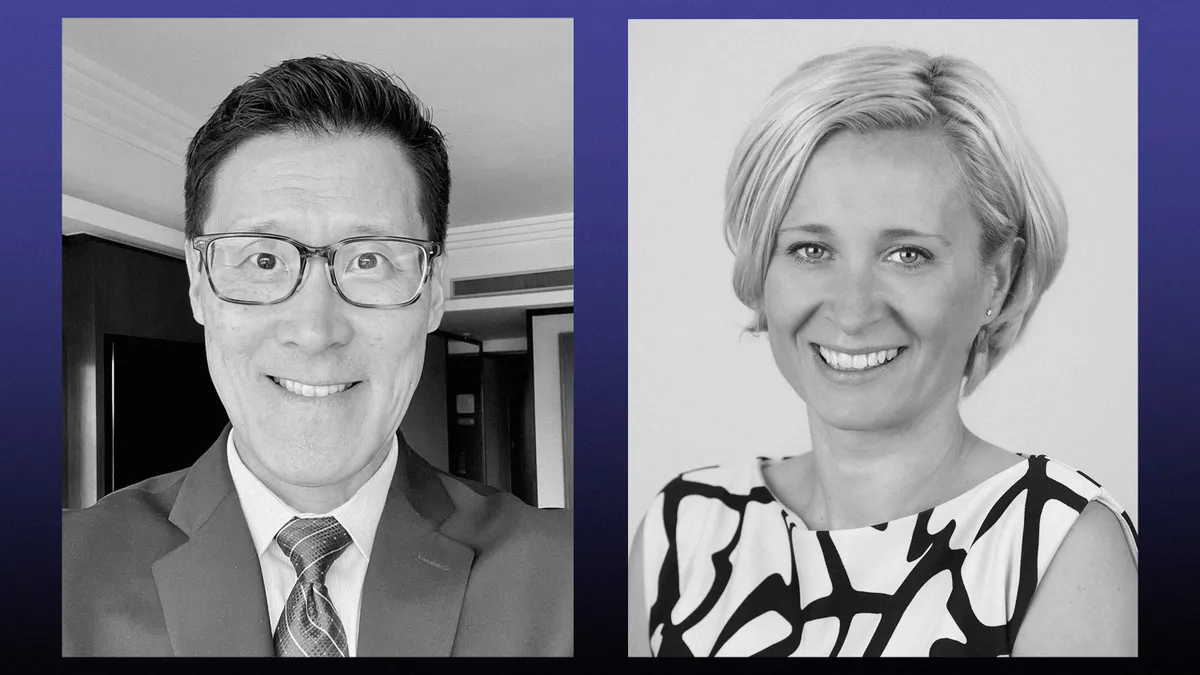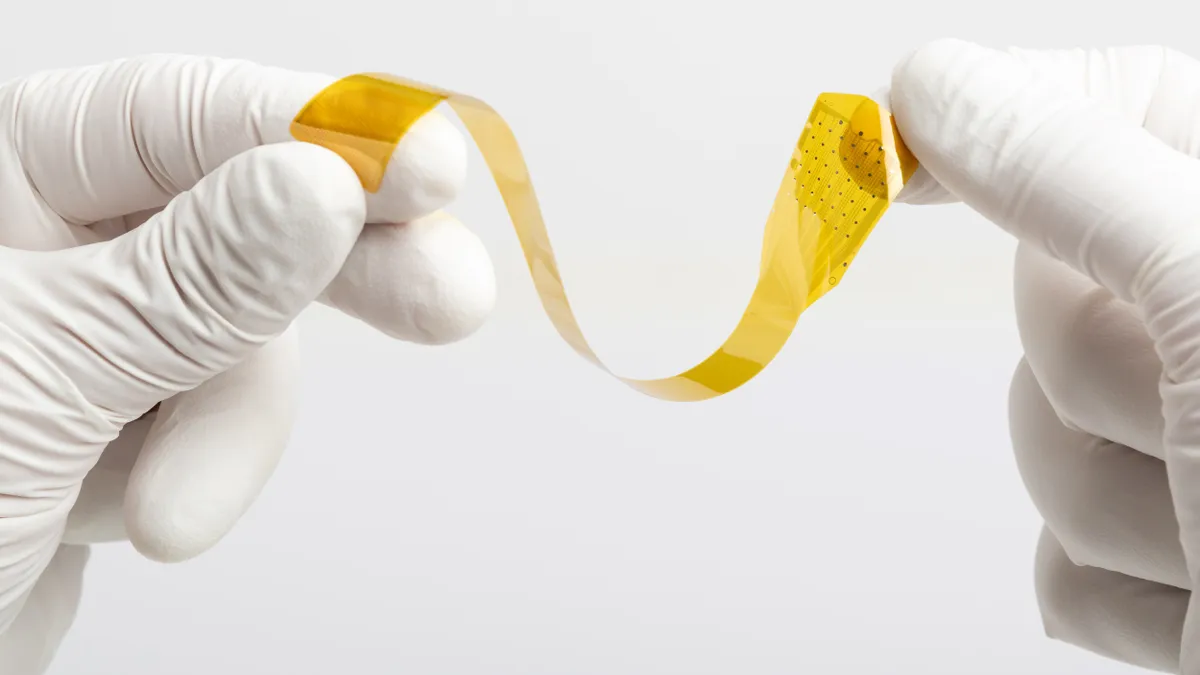New technologies for treating atrial fibrillation, with promising safety results, could lead more patients to seek treatment, opening up a multi-billion-dollar market for the procedure, Biosense Webster executives Jasmina Brooks and Tony Hong said in an interview.
Brooks was recently named president of Biosense Webster, a growing Johnson & Johnson subsidiary that contributed to J&J’s $1.1 billion interventional solutions segment last year. Hong is the company’s vice president of preclinical and clinical research and medical affairs.
Biosense Webster is competing with Medtronic and Boston Scientific to bring pulsed field ablation technology to the U.S. market. This type of ablation uses electrical signals delivered through a catheter to treat atrial fibrillation. Earlier this year, J&J shared the results of a 226-person study using the company’s Varipulse system, as it seeks a CE Mark in Europe.
The company also is bringing a new radiofrequency ablation device called QDOT Micro to the U.S., after receiving approval from the Food and Drug Administration last year.
Brooks and Hong talked about recent study results, and improvements in cardiac ablation technology.
This interview has been edited for length and clarity.
MEDTECH DIVE: Jass, you were recently named president of Biosense Webster. What will you be focusing on in your new role?
JASMINA BROOKS: I've been with Biosense Webster and J&J for the last almost nine years. To me, this is more of a transition to a larger leadership role versus coming into a brand new space. The prevalence of AF is on the rise globally, and this is a really interesting space to be in.
We have been in the [radiofrequency ablation] space for over 25 years, and we continue to advance the RF innovation, but are also working on developing [pulsed field ablation] technology.
What trends are you watching in cardiac ablation?
BROOKS: There are close to 40 million people globally with atrial fibrillation, and the prevalence continues to increase, mostly because we're all getting older. At least one out of four adults over the age of 40 may develop atrial fibrillation. Our hope is that with technologies like PFA, the access to this population of patients is going to be improved. Today, of those 40 million, only about 5% on average globally receive atrial fibrillation ablation.
TONY HONG: To Jass’ point around access, more patients seem to be directly involved in the decision making for their own care. So physicians are often looking at these patients and referring them for ablation or recommending ablation.
I think now, with the notion that PFA is safer — and certainly the data has shown this, while there's still some long-term data that needs to be followed up — more patients seem to be coming out of the woodwork so to speak, and asking for ablation.
So I expect that access to increase, and the volumes over time to increase for ablation, certainly for paroxysmal atrial fibrillation [a common heart arrhythmia].
BROOKS: We’ve come a long way in this field. You know, we were looking at some numbers recently, and in the period between 2007 and 2013, the success rate was 66%, and these procedures were close to four hours in duration.The fluoroscopy [radiation] exposure was over 40 minutes. What we’re seeing now, the success rates are around 90%. The procedure times are less than an hour. There's almost zero fluoro use during these procedures.
Patients are learning about this. With that data, along with your Apple Watch, along with the promise of safety of PFA, you get a lot more conversations that are driven by the patient versus the physician.
You recently published the results of a 166-person study of your new QDOT Micro radiofrequency ablation catheter. What are some of the big takeaways from that?
HONG: The high level outcome of this is that the primary effectiveness was just about 77%. The clinical success, which is freedom from symptomatic AF was 86%. And we had a very low safety event [injury rate] of 3.6%.
We're seeing improved effectiveness, efficiency and safety with the newest RF catheters. And if we look at these results, compared to PFA, PFA is coming out nicely, everything is coming around 70% [efficacy], if you truly do an apples to apples [comparison], but that is about a decade behind where RF is now. I think we're making tremendous strides with RF and given what we're seeing, I think there's still a strong position for RF in the market.
BROOKS: We feel that RF is not suddenly going to go away. We continue to advance RF innovation and continue to run projects and programs in that space while also focusing on developing a PFA portfolio. Obviously we're very excited about the QDOT Micro launch in the U.S. It's been launched in Europe and Japan. Already the feedback has been outstanding.
I know PFA is still relatively early in the U.S. What factors go into physician’s decisions for which type of ablation to use?
HONG: Initially, there's a tremendous focus on safety. So everyone is looking at safety and effectiveness. Complications like atrial esophageal fistula, while extremely rare, are quite devastating.
So I think the promise of safety with PFA is what's going to drive many physicians into switching over. Certainly for paroxysmal [AF]; I think for persistent AF or long-standing persistent AF, and even things like ventricular tachycardia, there are still many more questions to be asked.
While large registries like MANIFEST are coming out of the gate, talking about north of 81% success, that is based on standard-of-care monitoring, and not based on stringent monitoring that you would see in power trials like inspIRE or even the Pulsed AF from Medtronic. And so, there's a little bit of apples-to-apples comparison that we have to do. But I think again, the promise of safety is what's going to help physicians to move more toward PFA in the early paroxysmal patient population. And then as we learn more about effectiveness and long-term durability, I think that conversion will continue to move.
What are the differences in treating paroxysmal and persistent AF?
HONG: The simplest way to explain it is that in paroxysmal AF, patients have let's call them errant signals in the heart that are primarily coming from the pulmonary veins. And so by isolating the pulmonary veins, you can basically create an electrical conduction block. It's almost like creating a wall that prevents something from getting through it. Whereas in persistent AF, you actually have the arrhythmia triggers in areas outside of the PV. Given the fact that these errant signals are all over the place, physicians are now having to chase these signals. They have to know exactly where to ablate and because it's also sometimes difficult to understand the electrical block that you've created in parts outside of the PV, that ablation tends to be a little bit more complex.
Big picture, what sets your products apart from competitors?
BROOKS: What differentiates us is this ecosystem of offers that we have. Carto is the cornerstone of our portfolio, it’s the 3D mapping, the integration with the catheters that we have, and then the fact that every single catheter is developed from the very beginning to work seamlessly with Carto, not just for mapping, but also for the algorithms to ensure that you're delivering better lesions.
Our portfolio is really, really large. So we have Carto that sits in the center of everything, but you have to add the high density diagnostic catheters, too, that we just launched, you would add our therapeutic catheters, [and] in addition to that ultrasound operation to help even further minimize the use of fluoro. So I think for us as a company, it's a very rich ecosystem.
Just the passion of everybody that's working on this to truly really save patients lives and change them for the better I think it's just amazing. It’s what keeps me going day in and day out.



















